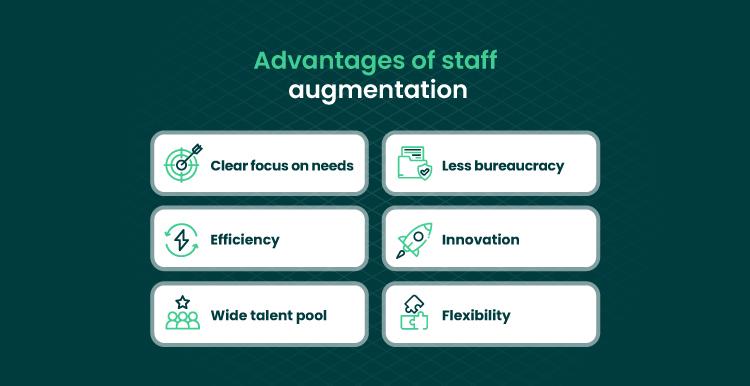Growing companies often face the challenge of expanding rapidly while maintaining operational efficiency. Staff augmentation offers a flexible solution, allowing businesses to temporarily expand their teams with skilled professionals without committing to permanent hires.
By leveraging this approach, companies can address skill gaps, meet critical project deadlines, and maintain high productivity levels. Internal teams remain focused on their core responsibilities while temporary staff manage specialized tasks effectively.
Key Advantages of Staff Augmentation
One of the primary benefits is flexibility. Growing businesses can scale their workforce up or down according to project demands. This avoids unnecessary long-term employment costs while ensuring projects are staffed with the right expertise.
Another significant advantage is access to specialized skills. Staff augmentation enables companies to bring in professionals with knowledge or technical capabilities that may not exist internally. This ensures projects are completed efficiently, accurately, and on time, enhancing overall operational performance.
Additionally, staff augmentation can accelerate project timelines. External professionals help distribute workload evenly and reduce delays, which is especially valuable for fast-growing companies facing tight deadlines.
For more detailed guidance on when and how to implement this model effectively, reviewing Growing Company Staffing provides practical insights and actionable strategies for businesses.
Potential Drawbacks
Despite its benefits, staff augmentation also presents certain challenges. Temporary staff may require time to integrate into company culture and internal processes, which can affect workflow if onboarding is not handled properly.
Another concern is knowledge continuity. Since augmented staff leave after project completion, critical expertise may not remain within the organization. Companies must implement proper handover procedures and maintain thorough documentation to ensure knowledge retention.
Finally, over-reliance on external staff may limit internal skill development. Organizations should balance temporary support with employee growth to maintain long-term capabilities.
Making the Right Choice
Staff augmentation is ideal for projects that require specific skills, rapid scaling, or temporary workforce expansion. Companies should assess project requirements, team capacity, and long-term growth objectives to determine if this model is appropriate.
When executed strategically, staff augmentation offers cost-effective solutions, access to expertise, and improved project execution. Insights from Growing Company Staffing can help companies implement this approach successfully.
Final Thoughts
Staff augmentation is a powerful tool for growing companies seeking flexibility and specialized talent. While it comes with potential drawbacks, careful planning and clear communication can maximize its benefits. By leveraging temporary professionals strategically, businesses can accelerate projects, fill skill gaps, and maintain operational efficiency, ensuring sustainable growth and success.

